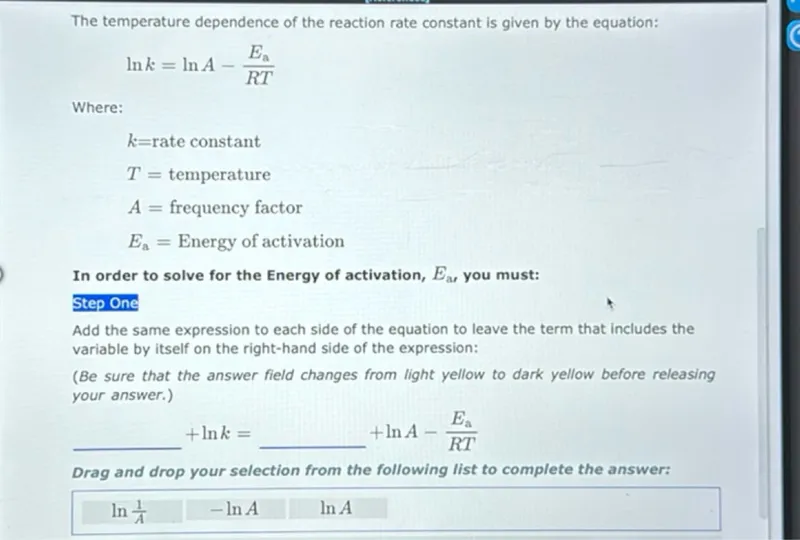Questions: The temperature dependence of the reaction rate constant is given by the equation: ln k = ln A - (Ea) / (R T) Where: k = rate constant T = temperature A = frequency factor Ea = Energy of activation In order to solve for the Energy of activation, Ea, you must: Step One Add the same expression to each side of the equation to leave the term that includes the variable by itself on the right-hand side of the expression: + ln k = + ln A - (Ea) / (R T) Drag and drop your selection from the following list to complete the answer: ln (1/A) - ln A ln A

Transcript text: The temperature dependence of the reaction rate constant is given by the equation:
\[
\ln k=\ln A-\frac{E_{\mathrm{a}}}{R T}
\]
Where:
\[
\begin{array}{l}
k=\text { rate constant } \\
T=\text { temperature } \\
A=\text { frequency factor } \\
E_{\mathrm{a}}=\text { Energy of activation }
\end{array}
\]
In order to solve for the Energy of activation, $E_{\mathrm{a}}$, you must:
Step One
Add the same expression to each side of the equation to leave the term that includes the variable by itself on the right-hand side of the expression:
(Be sure that the answer field changes from light yellow to dark yellow before releasing your answer.)
\[
+\ln k=\quad+\ln A-\frac{E_{\mathrm{a}}}{R T}
\]
Drag and drop your selection from the following list to complete the answer:
$\ln \frac{1}{A}$
$-\ln A$
$\ln A$





